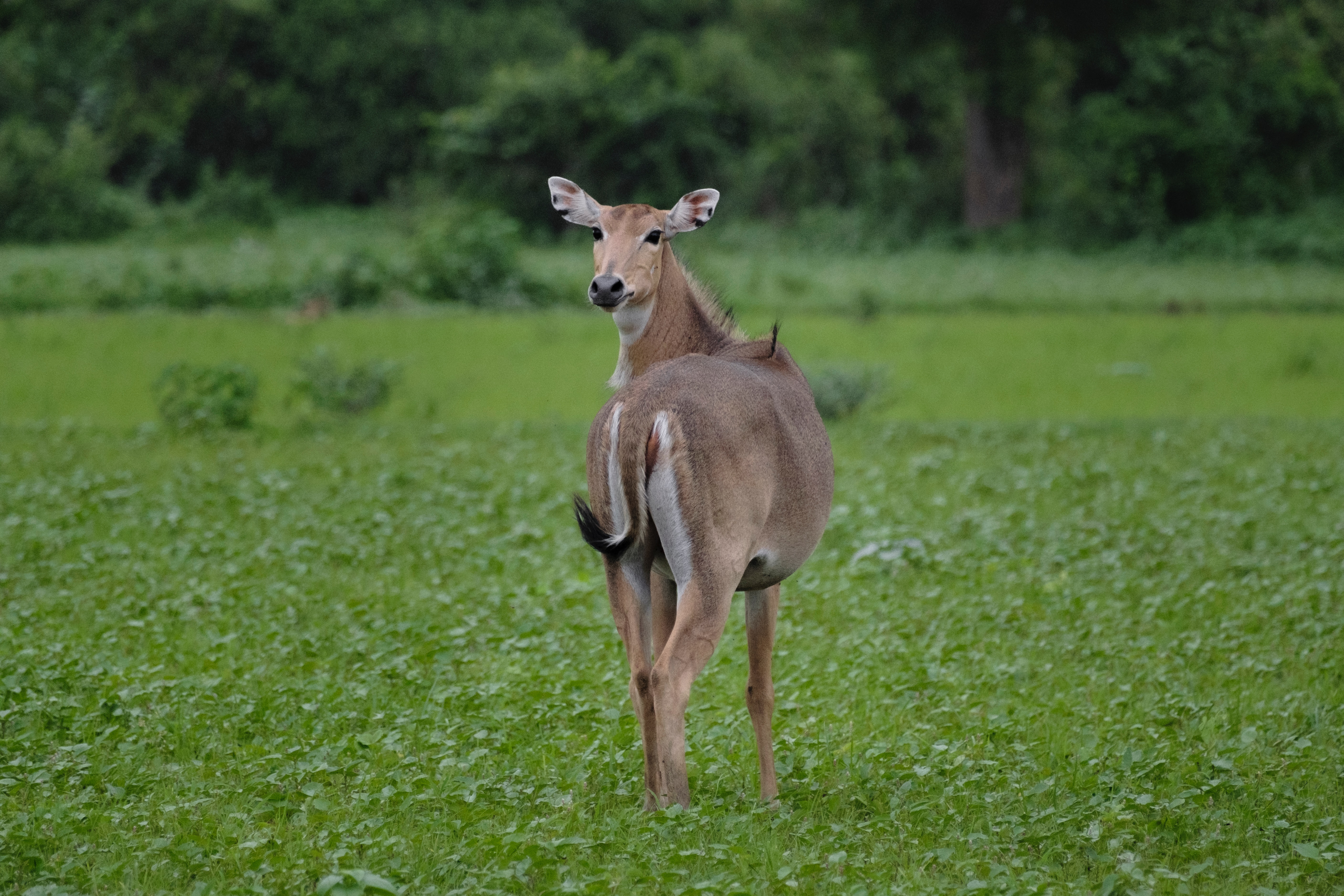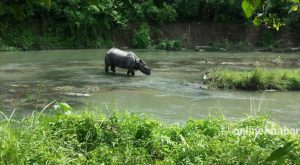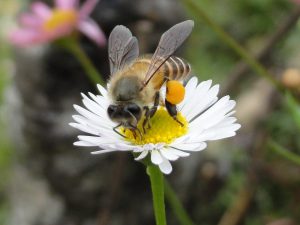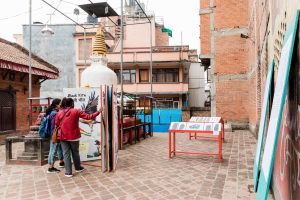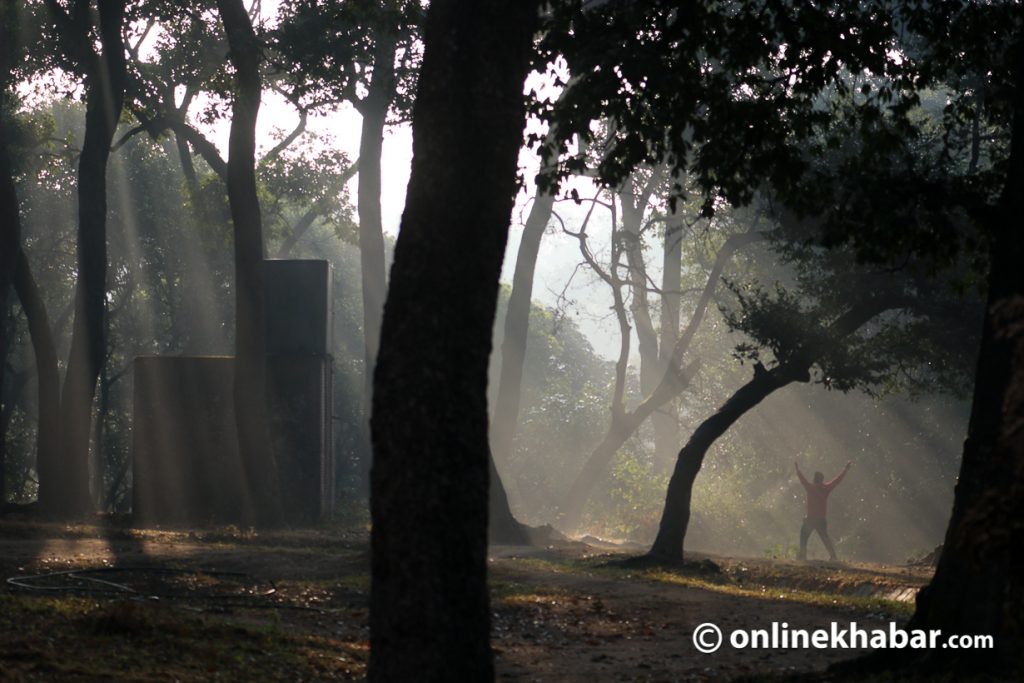
Milan Rai loves joking. A few months ago, this artist told Chiri Babu Maharjan, the mayor of Lalitpur, that he wanted bats to hang on a tree at Jawalakhel, a major roundabout in the city.
This was odd for two reasons. The first: trees big enough for bats to hide in are scarce in the city, known for its centuries-old art and architecture. The second: the mayor, re-elected for his second term earlier this year, had more pressing issues to address as his voters want him to focus more on roads and drinking water than on trees to “hang bats” as Rai demanded.
But, the mayor could not disregard his old friend’s request. A few years ago, Rai got Mayor Maharjan to agree to have a “hanging garden” on the roadside, which never did happen. This time too, he made the mayor take a tour of the city with him to assess places which could be suitable for the bats.
Then, he told the mayor it was a joke.
But, Rai tells Onlinekhabar that he has a serious message behind the joke. In recent years, the artist has worn a new hat: as a nature conservation activist focused on urban biodiversity.
Leaving some areas of peripheral Kathmandu aside, urban biodiversity is an oxymoron in Nepal’s capital valley. But, activists such as Rai, with the support of stakeholders such as Maharjan, are suggesting initiatives to restore the losses albeit at a nominal level for now.
Today, some 56 per cent of the world’s population – 4.4 billion inhabitants – live in cities, according to the World Bank. This trend is expected to continue, with the urban population more than doubling its current size, and by 2050, nearly seven of 10 people will live in the cities.
In Nepal, 66.08 per cent of the population currently lives in areas categorised as urban although experts have questioned the government’s definition.
The World Economic Forum acknowledges the great risks of this unchecked expansion of urban spaces. Unless they, too, are safe harbours for biodiversity, it will be difficult for countries to fully curb biodiversity loss by 2030, the ambitious target set out in the Post-2020 Global Biodiversity Framework, currently being negotiated in Montreal, Canada at the 15th meeting of the Conference of Parties of the UN Convention on Biological Diversity (UNCBD), popularly known as biodiversity COP15.
Little things matter

In the past decades, agricultural fields and open spaces of Kathmandu have been destroyed to build houses for people migrating from other districts. In a clichéd metaphor, the city is a jungle of concrete now. Kathmanduites have been habituated to understanding urbanisation as building houses in an open space.
The excessive population growth has resulted in all river systems in Kathmandu turning into sewage passages. The holy Bagmati is stealing global headlines as the “dirtiest” river.
According to the 2021 national population census preliminary report, 5,108 people live in each square kilometre of the Kathmandu district, the highest population density in Nepal. And, its population is growing by 1.40 per cent every year.
But still, Rai says restoring urban biodiversity is possible, slowly but steadily. “I wish to have all the chased-away sparrows back to my city, and I believe it’s possible if we act.”
With the same mission, Rai recently travelled to other bigger cities outside Kathmandu and told mayors to begin working with the open spaces that are yet to be occupied.
He knows urban biodiversity is not all about parks in a city, but given the current status in Nepal, he wants to begin with this.
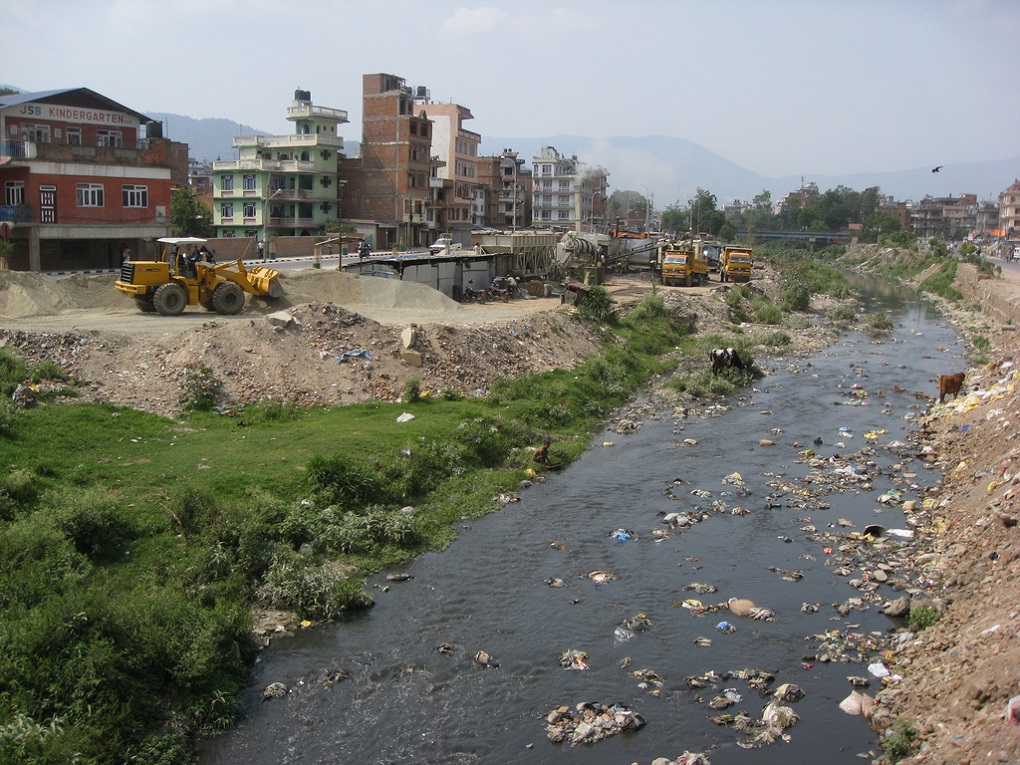
Bijay Raj Paudyal, a retired forest officer of the government, agrees, as he is also active in similar initiatives in his area. Paudyal heads Sinamangal Nagar Sewa Samaj, a community organisation established by his neighbours to work towards promoting greenery in his neighbourhood in eastern Kathmandu. “Many of us might think that if everything is all right inside our compound, that’s all we need to live a quality life,” he says, “But, it’s not the case. There are many things that you have to do for yourself and the people around you. Urban biodiversity restoration is one of them.”
In the small neighbourhood of some 0.5 square kilometres, his organisation has established and maintained six parks. “Of late, we are also facilitating the establishment and maintenance of such parks in other areas,” Paudyal says, “We are making other communities aware of why we need biodiversity.”
“Recently, people have begun planting trees on the banks of major rivers. Although in low quality, they are establishing green parks,” he says. “This has to continue and expand further.”
With those parks, come birds, bees and even bats – all signs of a healthier ecosystem.
Learning from the world

Rai says there are many examples across the world where dead rivers and cities have been brought back to life and cities in Nepal have to learn from them.
He is right; global stakeholders also stress learning from each other. Local leaders from several cities across the world recently gathered in Montreal, Canada currently for the 7th Summit for Subnational Governments and Cities on the sidelines of COP15 to share how they are promoting urban biodiversity in their respective regions and cities. The leaders discussed ways to promote biodiversity in urban areas for two days and submitted their recommendation to the CBD Secretariat, demanding it is accepted as a part of the Post-2020 Global Biodiversity Framework, expected to be adopted by COP15.
The current draft of the framework talks about urban biodiversity in target 12, which does not have any bracket, indicating no party has any disagreement about the content of the target. Perhaps the city leaders have been encouraged by the development.
This issue is also addressed in target 14, as the need to mainstream biodiversity in mixed-use spaces, that is, to improve those policies and practices that influence land uses outside of protected areas.
Speaking in a press conference on Tuesday (December 13) after the conclusion of the summit, Liu Jiachen, the mayor of Kunming in China, appreciated the host city of Montreal for maintaining its biodiversity. “Every morning, I get excited to run along the river. Such a beautiful city, I’m impressed,” he said, “This can be a great example for Chinese cities.”
Speaking before him, Montreal Mayor Valérie Plante explained how cities are feeling the impact of biodiversity loss and how they need to work, in partnership with each other, to restore it. She also informed that her local government recently announced to protect 30 per cent of the land (as the protected area for biodiversity).”
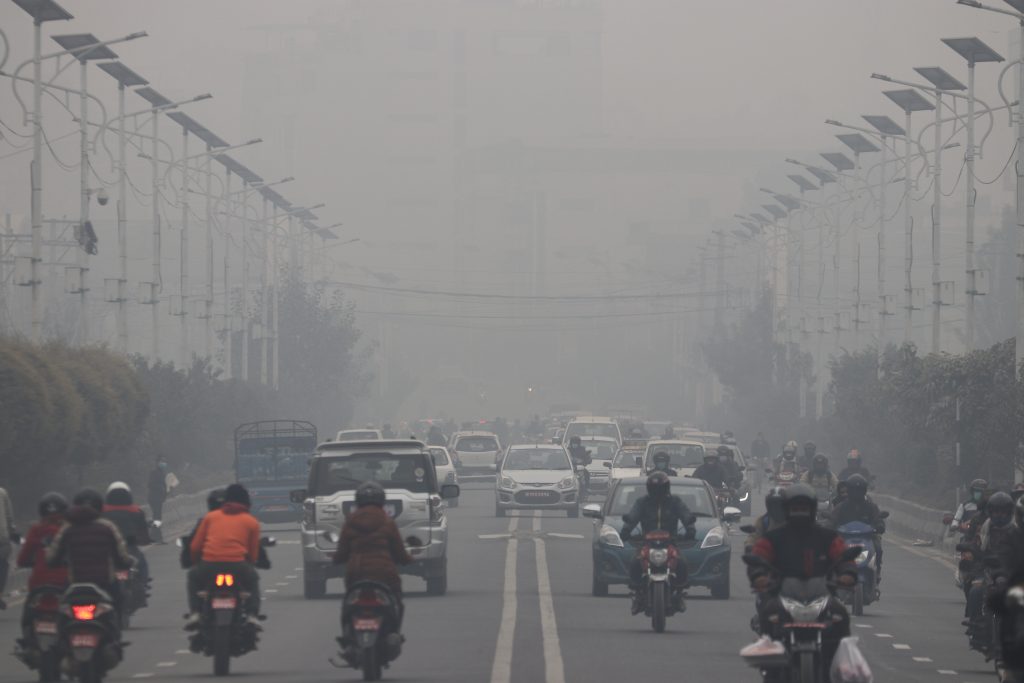
No one from Nepal participated in the summit of subnational governments and cities.
Before that, mayors of 15 cities met separately on the sidelines of the COP and issued a call to increase funds to promote urban biodiversity.
Priyanka Pandey, a Nepali participant of the biodiversity COP15 on behalf of the Global Youth Biodiversity Network, after following these events closely, says Nepal’s city governments should also focus on their initiatives to restore urban biodiversity along with looking at other cities and learning from what they have done.
“The one-shoe-fits-all approach might become detrimental. For Kathmandu, we first need to build parks to balance greenery with the network of roads there,” she says.
Taking it forward
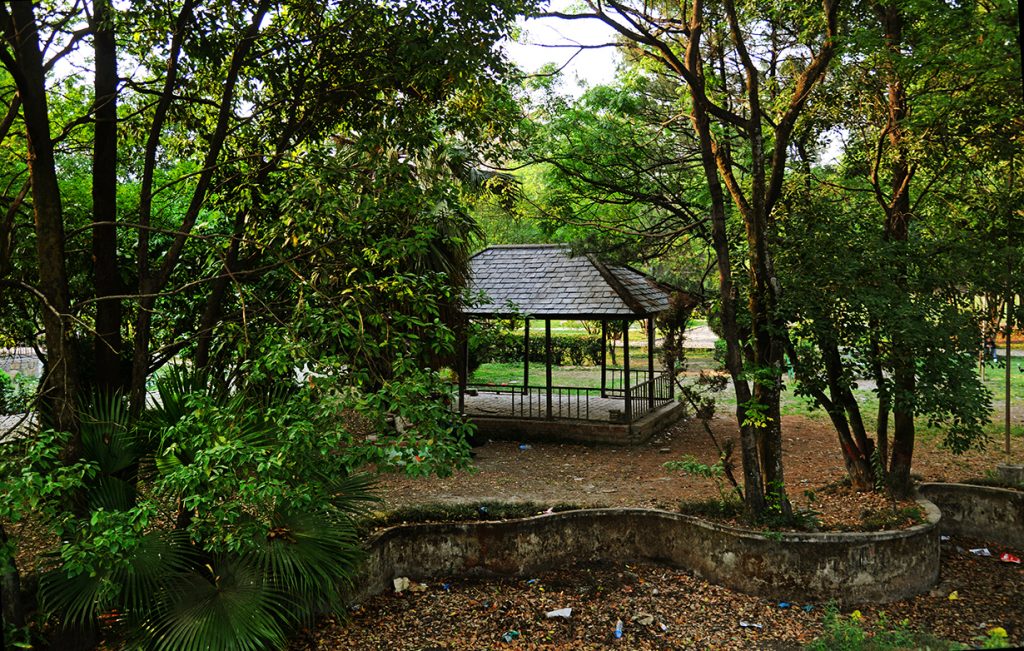
Authorities in Kathmandu say they agree that the city needs to restore urban biodiversity, claiming they have already started some initiatives.
The Kathmandu Valley Development Authority, a federal governmental body assigned to coordinate with local governments in the valley for urbanisation-related projects, says it established 15 new parks in the valley last year and it is planting over 8,000 plants in these parks and other empty spaces in the next three years. “We have also launched a new project to protect two ponds in Bhaktapur and Lalitpur. We will hand them over to the local governments and ask them to own it,” the authority’s development commissioner Januka Dhakal says.
The local governments say they are ready to take the lead too. Lalitpur metropolitan city’s spokesperson Raju Maharjan says the local government believes it has to focus more on environment conservation than infrastructure development in the long run. “That’s why we have issued a circular to all wards to build at least one green park within a year. Our green and blue project, meant to restore greenery and water resources, has been in operation for five years.”
Kathmandu metropolitan city, the most populous local unit in the valley, did not respond to requests for comment about the status of urban biodiversity there.
But, neighbouring Lalitpur works with the United Nations Environment Programme to promote urban biodiversity. UNEP Cities Unit programme officer Sharon Gil, who is in Montreal for the biodiversity COP, says the UN agency has been motivating city governments to break barriers and take risks towards promoting green and blue spaces in urban areas. “For now, the funding appears to be the biggest barrier,” Gil tells Onlinekhabar, “But, it’s not true that there’s no money. There’s money and we need to redirect it.”
She suggests central governments, financial institutions, the private sector and local communities need to support cities in promoting urban biodiversity.
Impressed by the initiatives taken by the Lalitpur metropolitan city, she says, “Nepal now needs more Lalitpurs. The world needs more Lalitpurs. We need to work on that.”
So, perhaps Milan Rai’s joke about bats on the trees at the crossroads will be a reality someday?
“Why not?” Rai says, adding he now believes Maharjan will cooperate with him this time to establish “bat habitats” in the city. “But, don’t think that you do one project and it’s over. You need to work persistently to transform society.”
This story was produced as a part of the 2022 CBD COP15 Fellowship organised by Internews’ Earth Journalism Network.






